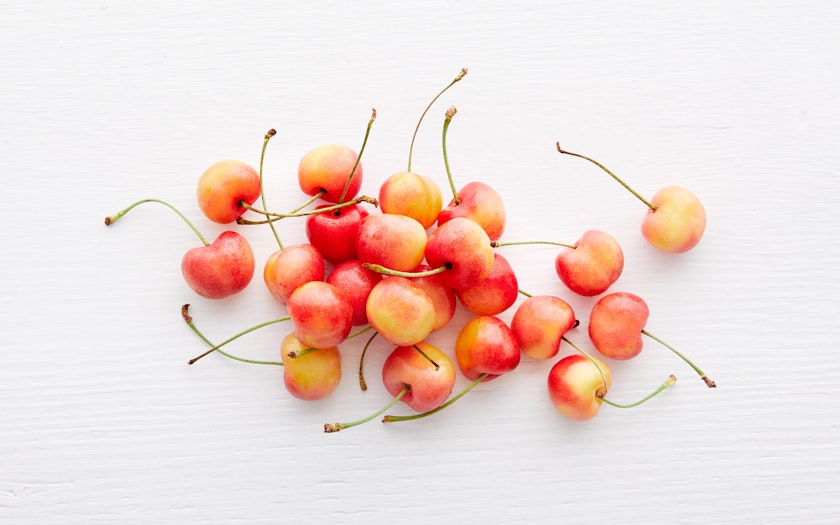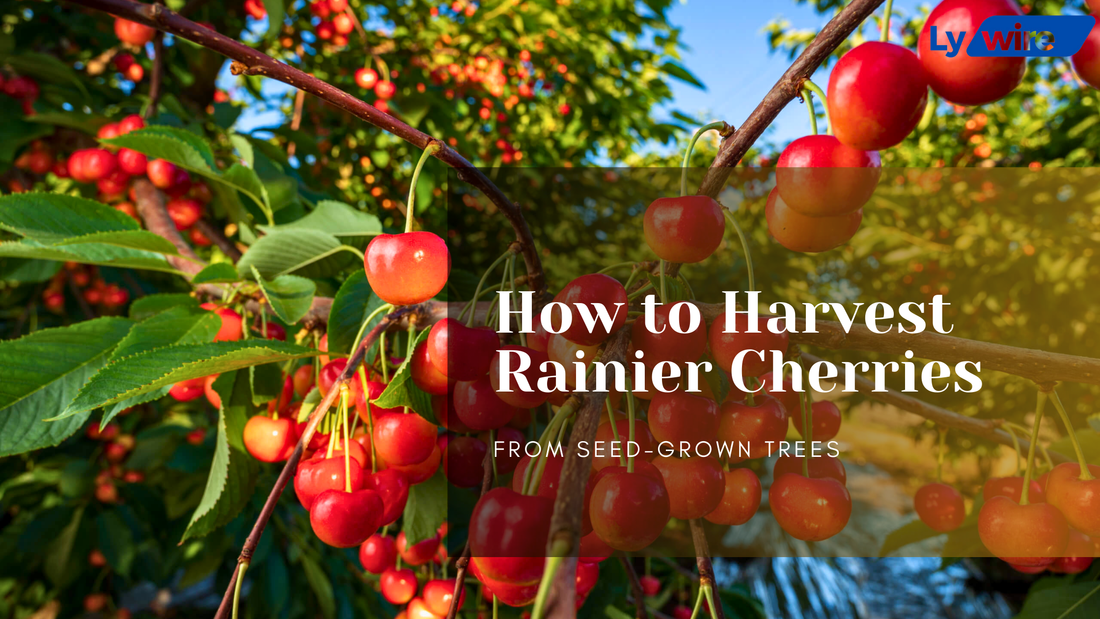
Rainier cherries are among the most prized varieties of cherries, known for their sweet flavor, creamy-yellow flesh, and delicate red-yellow blush. Growing Rainier cherries from seed is an exciting endeavor that requires patience, care, and knowledge. This blog will guide you through the entire process—from nurturing seed-grown trees to harvesting these delectable fruits.
Understanding Rainier Cherry Trees
Rainier cherries (Prunus avium 'Rainier') were developed in 1952 at Washington State University by Harold Fogle as a cross between Bing and Van cherries. They are highly sought after for their exceptional sweetness and delicate texture, earning them the nickname “Champagne of cherries”.
Key characteristics:
- Height: Mature trees grow up to 30-35 feet tall.
- Bloom Period: Early April.
- Harvest Time: Late June to early July.
- Pollination Needs: Requires pollenizers like Bing, Van, or Lambert cherries for fruit production.

Growing Rainier Cherry Trees from Seeds
Step 1: Preparing the Seeds
To grow Rainier cherry trees from seeds:
- Extract seeds from fresh Rainier cherries and clean them thoroughly.
- Stratify the seeds by placing them in moist soil or sand in the refrigerator for 10-12 weeks. This mimics winter conditions and encourages germination.
Step 2: Planting the Seeds
- After stratification, plant the seeds in well-drained, loamy soil with a pH between 6.0 and 7.0.
- Choose a sunny location that receives at least 6-8 hours of sunlight daily.
- Space seeds or seedlings adequately to allow room for growth.
Step 3: Caring for Seedlings
- Water deeply once a week, ensuring the soil remains moist but not waterlogged.
- Protect young trees from pests and harsh weather using netting or windbreaks.
Maintaining Mature Rainier Cherry Trees
Pruning
Regular pruning improves air circulation and sunlight penetration, promoting healthy growth and higher yields. Remove dead or overcrowded branches annually.
Fertilization
Apply balanced fertilizers during early spring to support flowering and fruit development. Organic compost can also enhance soil quality.
Pollination
Rainier cherry trees require cross-pollination to bear fruit. Plant compatible cultivars like Bing or Van nearby to ensure successful pollination.
Harvesting Rainier Cherries
When to Harvest
Rainier cherries are ready for harvest in late June to early July when they develop their signature creamy-yellow color with a red blush. Look for firm fruits with vibrant colors.
How to Harvest
- Harvest cherries by hand to avoid damaging the delicate skin.
- Twist gently at the stem to detach the fruit without harming the tree branches.
- Place harvested cherries in shallow baskets or bins to prevent bruising.
Post-Harvest Care
Storage
Rainier cherries should be stored cold in the refrigerator immediately after harvest. They can last up to two weeks when kept dry and unwashed.
Usage
Enjoy freshly harvested Rainier cherries as snacks, or use them in desserts, jams, and salads.

Challenges in Growing Rainier Cherries
Rainier cherry trees are sensitive to environmental conditions:
- Weather: Wind, rain, and temperature fluctuations can damage crops.
- Pests: Birds are notorious for eating Rainier cherries; protective measures like netting or scare devices are essential.
- Pollination Issues: Insufficient pollinators can reduce yields; consider introducing honeybees or planting additional pollenizer trees nearby.
Tips for Maximizing Yield
- Ensure consistent watering during dry spells but avoid overwatering.
- Protect cherries from birds using nets or sound deterrents.
- Regularly monitor soil health and amend it as needed with organic matter.
Harvesting Rainier cherries from seed-grown trees is a rewarding experience that requires dedication and proper care throughout the growing process.
By following this guide, you can enjoy a bountiful harvest of these premium fruits while appreciating the effort it takes to nurture such delicate trees.
Start your journey today and savor the sweetness of homegrown Rainier cherries!


